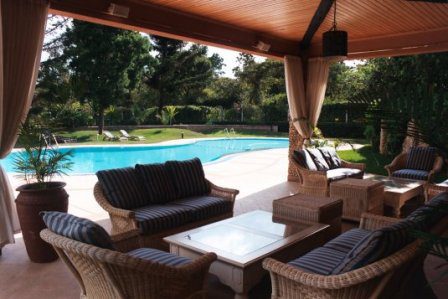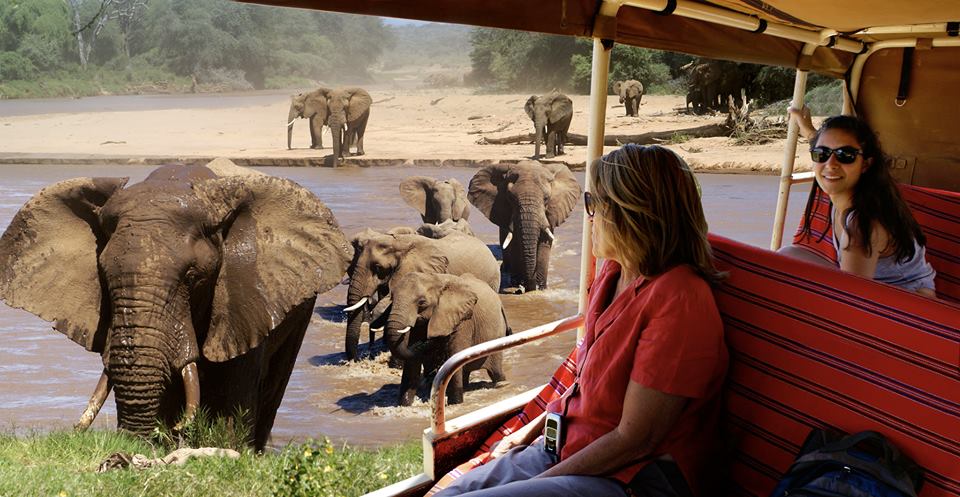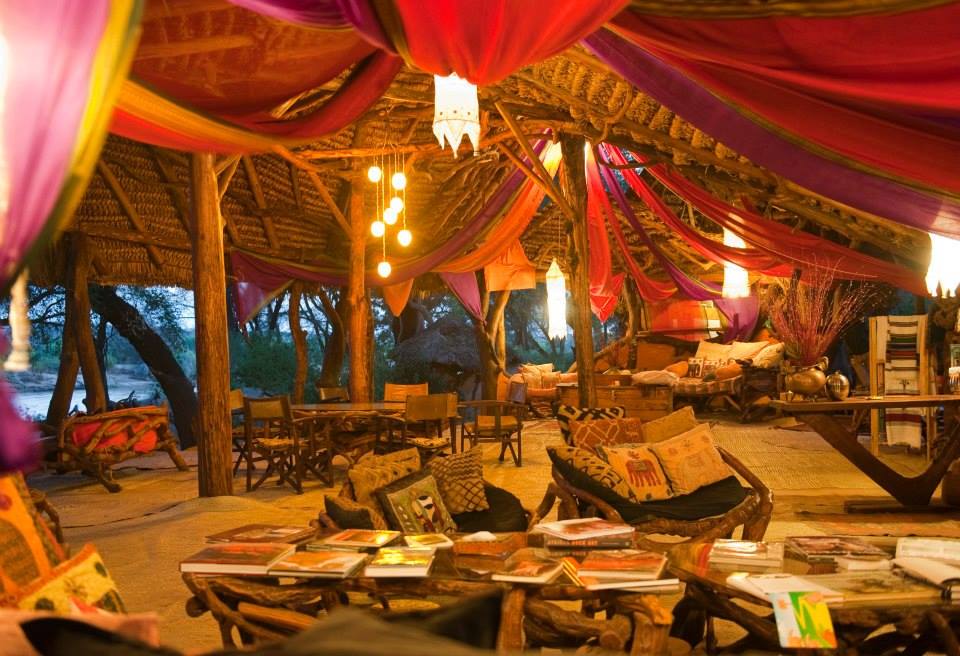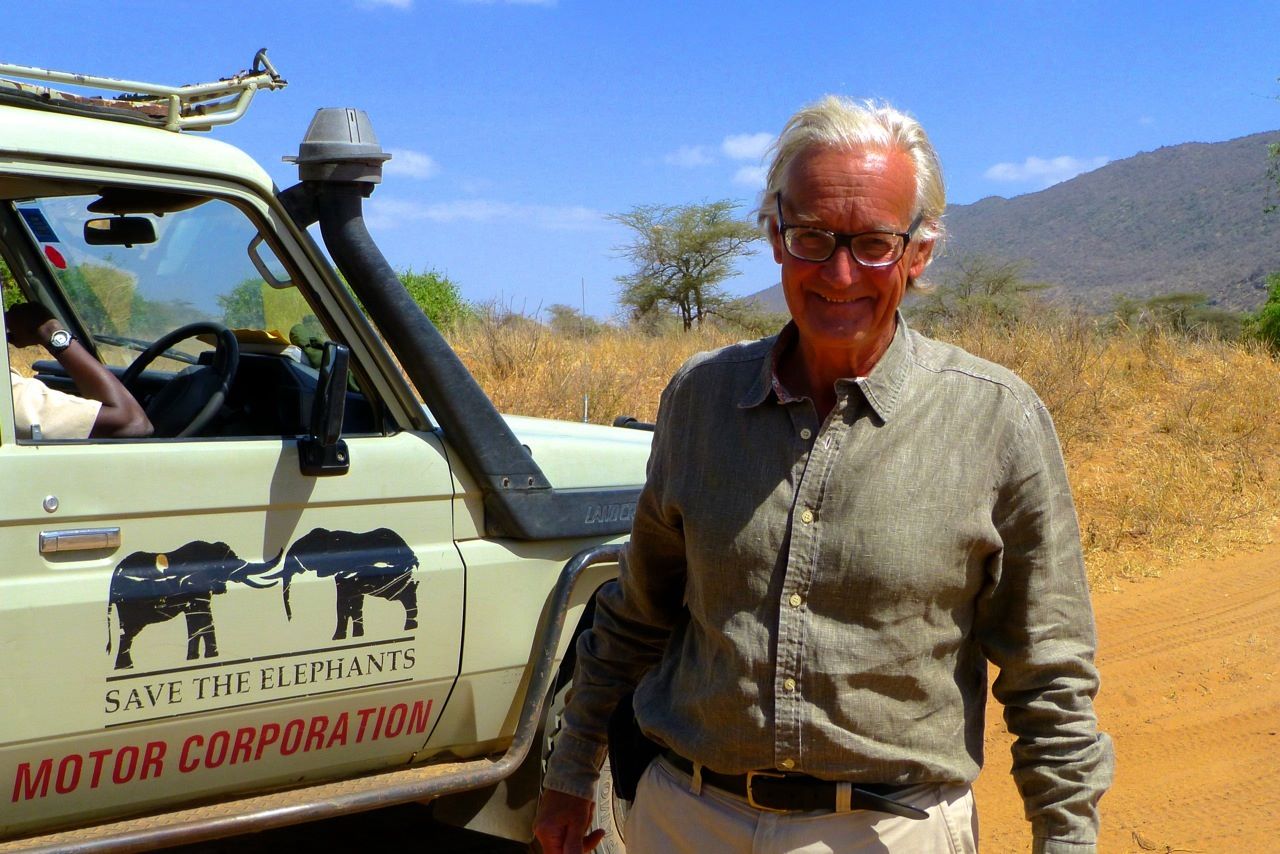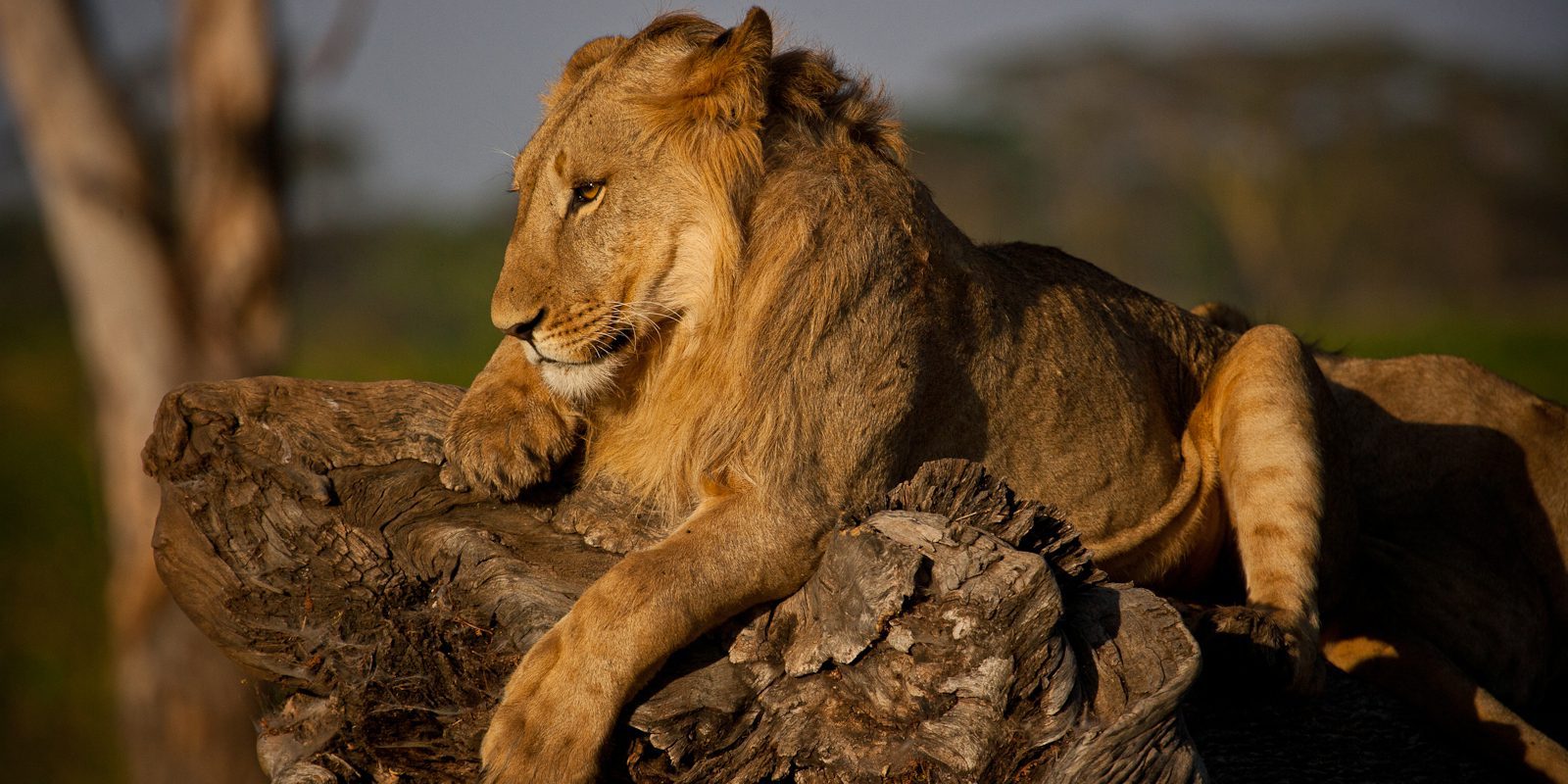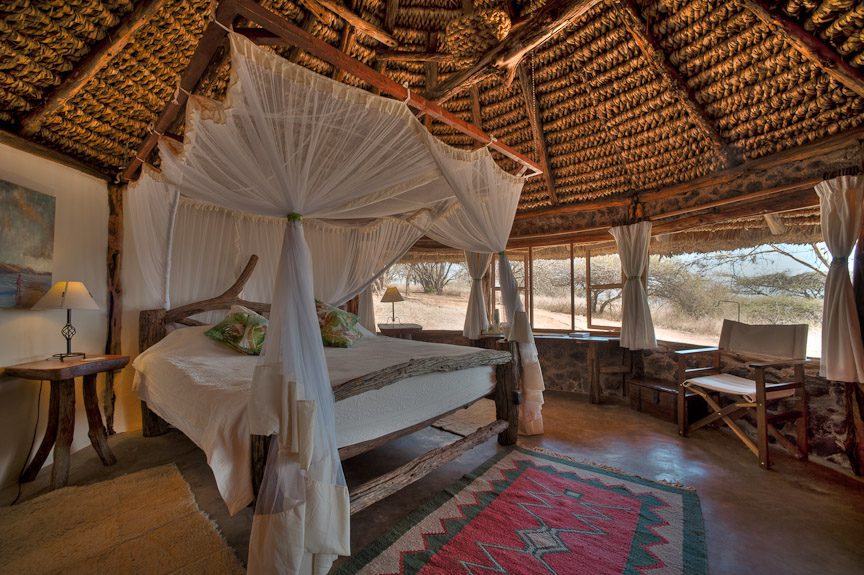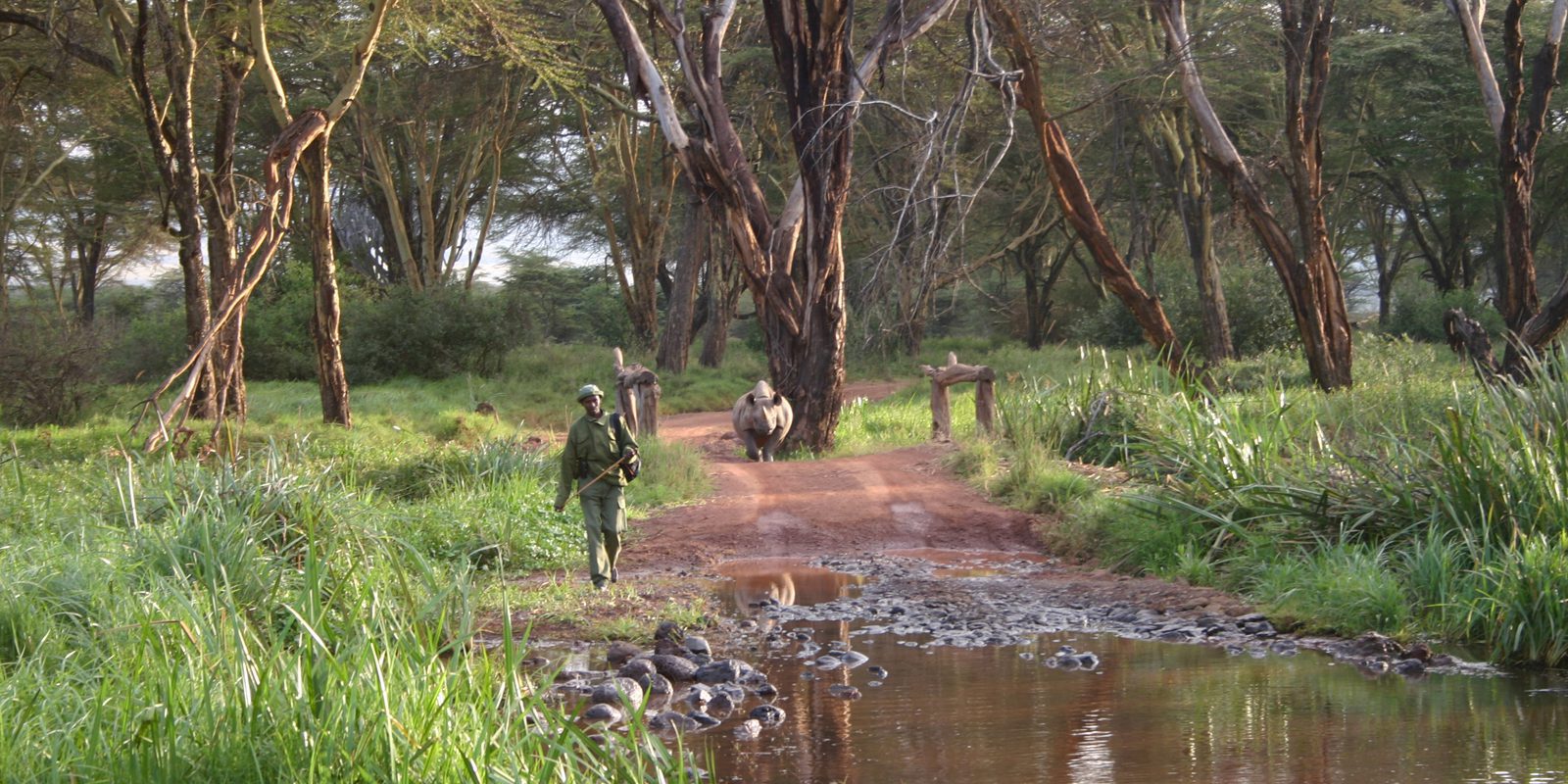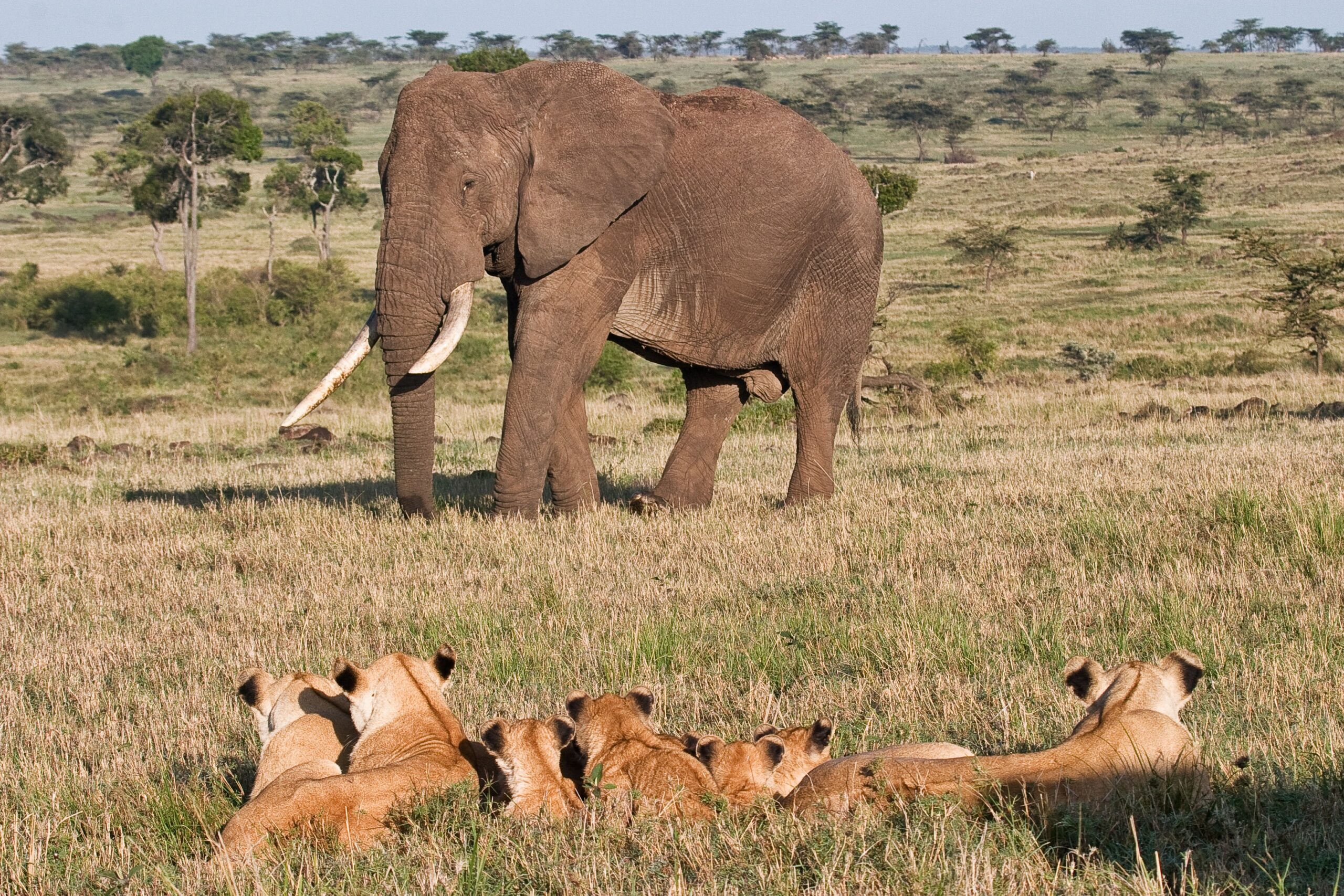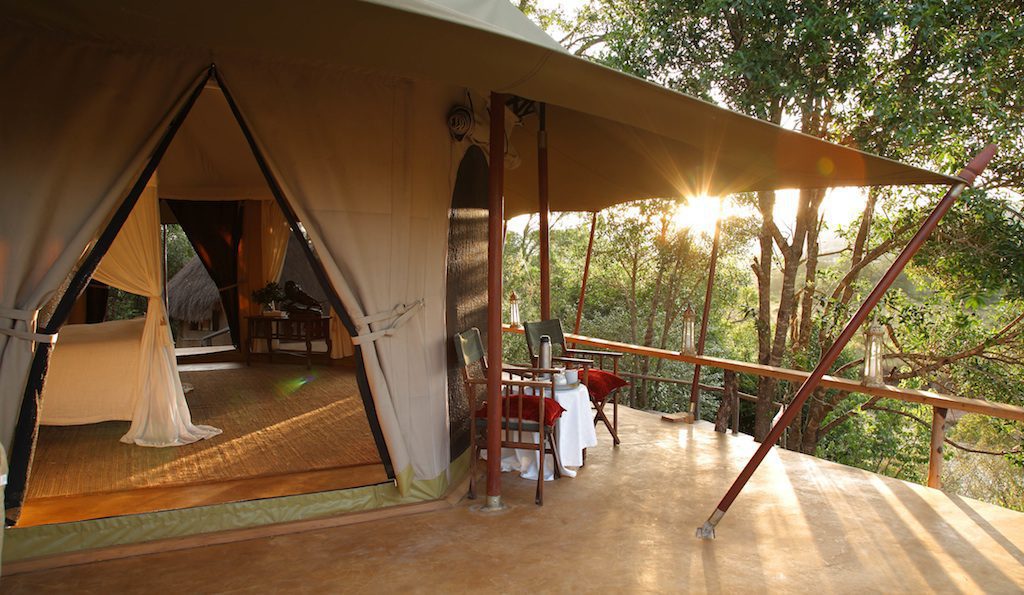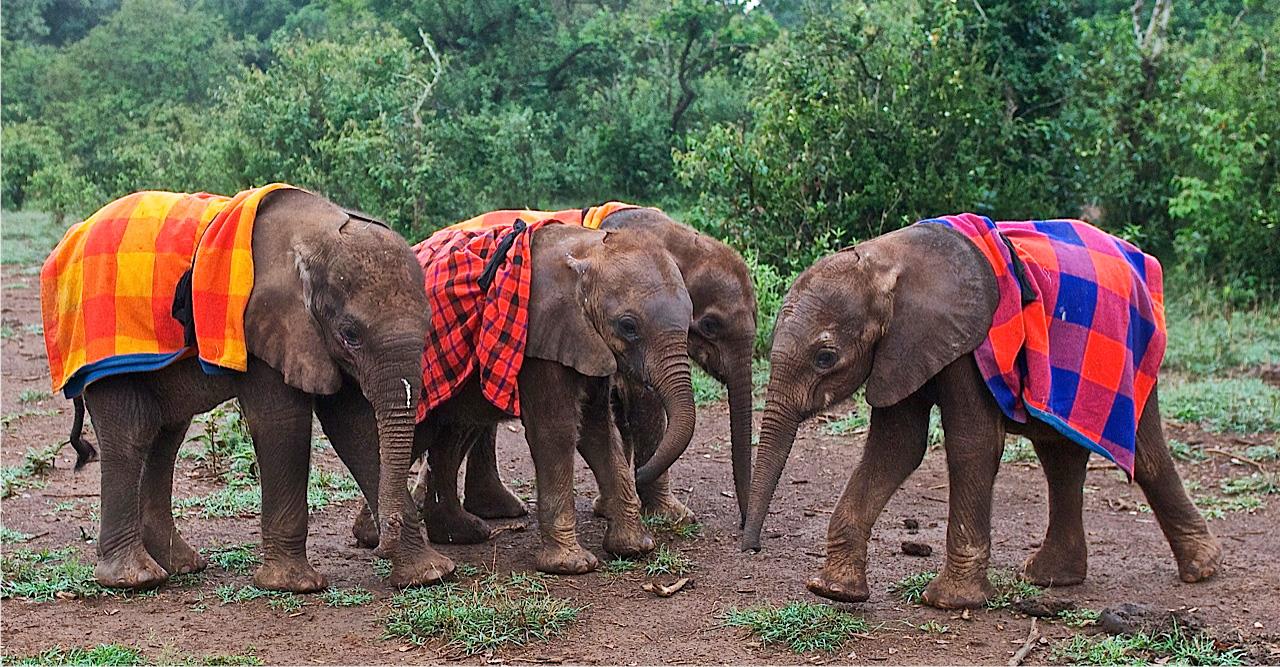Day 1: House of Waie, Nairobi
Welcome to Africa! Your Kenyan safari begins at Jomo Kenyatta International Airport where you will be greeted upon arrival and transferred to House of Waine in Karen.
In Nairobi, you will find a city that is lively, cosmopolitan and full of contrasts. It’s a place of smart office workers, mansions and expensive suburban shopping centers as well as slums crowded with people struggling on as best they can. Displaying enormous vitality and buzz, Nairobi is one of Africa’s major cities and is East Africa’s hub for commerce, aid and increasingly, technology. It hard to imagine that this city of almost 5 million people celebrated its 100th anniversary in 1999 and that where it now stands, only Maasai manyattas stood barely a century ago!The suburb of Karen has retained much of its mid-century charm, its quiet lanes lined with estates with sprawling stone houses and large verandas looking into mature gardens. Located in this leafy suburb, House of Waine is a small, family-owned boutique hotel that blends elegance with the spirit of modern Africa in an exclusive and serene setting. Each of the eleven bedrooms is individually styled with canopy beds, deep claw-foot bathtubs, and luxurious fabrics. House of Waine is a perfect choice for those that wish to experience Nairobi from a comfortable and serene distance.
Days 2-4: Elephant Watch Camp, Samburu
Enjoy a hearty breakfast in the garden before you are driven to Nairobi’s Wilson Airport for your flight to Samburu. You will spend 3 nights at Elephant Watch Camp.
The Samburu National Reserve lies 200 miles north of Nairobi on the hot and arid fringes of the vast northern region of Kenya. The Reserve is within the lands of the colorful Samburu people, close relatives of the Maasai, and home to a number of wildlife species rarely found elsewhere in Kenya such as the Grevy’s Zebra, reticulated giraffe, Somali ostrich and Beisa oryx, all are found only north of the equator. The graceful antelope, the gerenuk, with its characteristic long neck, spends much of its time on its two back feet in search of the greenest leaves on trees and brush. This dramatic landscape is blanketed by the hot equatorial sun for most of the year. Relief comes from the cool waters of the Uaso Nyiro (“Brown”) River, which rises to the west on the foothills of the Aberdares and vanishes beyond Samburu in the soggy expanse known as the Lorian swamp. The scenery in Samburu is magnificent and the birdlife awesome.
Elephant watching begins on arrival as your guides meet you at the airfield. As you drive through the reserve you’ll spend time with many of the well-known elephant families. Your guide will also introduce you to some of the particular Northern inhabitants as well – the slim necked gerenuk, reticulated giraffe, Grevy zebras and over 400 species of birds. In addition to game-drives you can take an early morning or evening bush walks along well-traveled elephant paths or collect medicinal plants and honey, always accompanied by a Samburu warrior and guide.
Elephant Watch is perched on the sand banks of the Ewaso Nyiro River beneath large Kigelia and Acacia trees. This amazing camp is owned by Oria Douglas Hamilton the talented and flamboyant wife of wildlife research scientist and head of Save The Elephants, Iain Douglas Hamilton. She, or one of their daughters are usually there to host you. The camp’s area is home to some of the largest elephant bulls in Samburu, often spotted resting under an Acacia or picking pods beside the tents. The trees are filled with a multitude of birds and monkeys. At dawn a gentle chorus echoes overhead, announcing a new day in the wild. The eco-friendly camp has been constructed for comfort and coolness, accommodating a maximum of ten guests, with its wide and breezy desert tents draped with colorful cloth and unusual furniture. Everything about Elephant Watch Camp is a feast for the senses, with bright swathes of cotton fanning in the breeze, huge cushioned sofas, woven local mats and beds and furniture made from fallen trees. Menus are a fusion of bush gourmet, fresh from the family farm, with tropical fruit and drinks and a selection of good wine. At night, flame torches and lanterns light up the camp.
Ian Douglas-Hamilton, Founder of Save the Elephants
Visit the Save the Elephants Research Station
The highlight of your visit to Elephant Watch Camp will be your visit to the Save the Elephants research station. Save the Elephants was founded by Iain Douglas-Hamilton, one of the world’s leading elephant researchers who pioneered the first in-depth scientific study of elephant social behavior in Tanzania’s Lake Manyara National Park decades ago. Although Save the Elephants works throughout Africa, and is in fact leading the battle against elephant poaching in all of Africa, the Kenya research station is the center of their research, protection, advocacy and communication programs. Visitors to the research station tour the center and learn about the STE’s work. It is truly fascinating to see the giant tracking collars, talk to the staff and learn about the project. Keep an eye out for the skeleton of a Land Rover crushed by a charging elephant. The research station is closely affiliated with Elephant Watch Camp, which is owned and managed by Oria Douglas-Hamilton (Iain’s wife).
Days 5-6: Lewa House, Laikipia
Today you will be driven from Samburu to the Lewa Wildlife Conservancy where you will stay at the family-owned Lewa House
Lewa Wildlife Conservancy is a 65,000 acre conservancy, with outstanding game viewing, and spectacular views of Mt. Kenya to the south and the arid lowlands to the north. Lewa is one of Kenya’s major private conservation successes. Lewa has been the Craig family home since 1924 when the Craig grandparents came from England and began raising cattle here. “Leave room for the wildlife” has been the Craig ethic, as the area is committed to the conservation of wildlife and diverse habitats found on the northern slopes of Mt Kenya. Endangered species abound in the Lewa Wildlife Conservancy and it is most famous for its rhino conservation. While you are here, you may see everything from elephant and rhino to dik dik, to reticulated giraffe and two species of zebra: Burchell’s and the rare Grevy’s. Lion, leopard and cheetah are found as well.
Lewa House is managed by Sophia (Craig) Macfarlane and her husband Callum. They live there year round with their two children and as soon as you arrive will feel you are a part of the multi-generational Craig family that founded the Lewa Conservancy.
Lewa House itself is set on top of a hill with an engaging panoramic view of the rolling landscape of the Conservancy, and overlooks the luggas (valleys) and hills, with the horizon rising to the eye-catching views of the Mathews range and the sacred mountain of the Samburu, Ol Lolokwe. The property has a main building with a lounge and dining area, opening up to the charmingly furnished stretch veranda with its own special vista across the plains of Northern Kenya. A short walk away there are three large cottages each with a double and a twin room, making the property suitable for up to twelve people. All the cottages have en suite bathrooms, apart from the family cottage, which has a shared bathroom. Each of the cottages has a private veranda where guests can sit in the cool of the evening to enjoy the starlit African skies. A large swimming pool overlooking the waterhole is also yours to enjoy at Lewa House.
A behind the scenes look at Lewa’s Conservation Efforts
One of the most popular is helping to train the tracker dogs. These are delightfully sloppy blood hounds who come with their handlers. A group of people pretends to be poachers and run away into the bush and hide, and then the dogs follow until they find the ‘culprit.’ It’s a game of hide-and-seek with a purpose. It’s also fun to go on an expedition to recover the data from the camera traps on the wildlife corridors and to talk with the rangers who protect this wildlife. Staying with the family that helped found Lewa has its perks! Spend evenings over dinner learning more from Callum and Sophie about the day to day efforts that go into keeping Lewa’s animals safe.
In addition to learning about the conservation efforts at Lewa you will also have the opportunity for game drives, horseback riding or bush walks with Maasai guides. For clients who are interested you can visit the cultural Boma, the furniture workshop or one of several community projects put in place by the conservancy.
Days 7-9: Serian Camp, Maasai Mara, Mara North Conservancy
Today you will be transferred from Lewa House to the Lewa Airstrip where you’ll catch a flight to Mara North Airstrip. Upon landing, you will be transferred to Serian Camp. The Maasai Mara is known for its excellent wildlife viewing, especially the wildebeest migration. You are sure to be impressed!
Mara North Conservancy is a beautiful private wilderness area of more than 74,000 acres. It is home to a spectacular array of plants, reptiles, birds and mammals; including elephant, rhino, buffalo, lion, leopard, cheetah and large concentrations of wildebeest, zebra, gazelle and other migratory wildlife. Leopard Gorge, in the heart of the conservancy, is famous as the setting of countless BBC Big Cat Diaries and National Geographic documentaries. Bordering the Maasai Mara National Reserve, the conservancy is vital for sustaining the famous Serengeti wildebeest migrations and the highly threatened African wild dog and black rhino.
Serian Mara is the private camp of Alex Walker. A fourth generation Kenyan and child of a professional hunter, he spent his childhood in forest and bush learning from local trackers. A highly respected guide and maker of wildlife documentary films, Alex has made Serian his home, and you will feel that you are his private guests in a gracious, unusual and magical place. To reach the camp, you will cross a suspension bridge. On the other side you will find décor that is “comfy settler” — with beautiful art work. Tents are huge and white and well decorated with outdoor bathing area under the same roof with flush toilets and hot water for shower or tub. Your tent is lit by softly glowing kerosene lanterns. There are lights and electricity for re-charging batteries in the tents.
While here you may wish to indulge in a hot air balloon ride. Suspended in a basket beneath the balloon, you float over the plains and above the forest alongside the Mara River, checking out hippos, crocodiles and elephants from high above, to end with a champagne breakfast in the open grassland within the reserve. Other exciting optional activities include nature walks in a private reserve that is accessible only on foot or fishing.
Day 10: Departure
Today you will fly from the Mara to Wilson Airport. From Wilson you will be met by your driver guide. This afternoon and evening are an exciting conclusion to your conservation safari. You will be taken to lunch at Karen Blixen gardens where you will meet up with conservation activist Justis Nyamu. From here you go to Daphne Sheldrick’s Elephant orphanage. Have dinner and clean up at Ole Sereni before you are transferred to Jomo Kenyatta International Airport to connect with your flight home.
Adopt an Elephant at Sheldrick Elephant Orphanage
You will visit the Daphne Sheldrick’s Elephant Orphanage. The orphanage was founded and is still managed by Daphne Sheldrick, the widow of David Sheldrick, a famous naturalist and warden of Tsavo National Park from 1948 to 1976. The center is a nursery and rehab center for infant elephants that have lost their families, as well as the occasional rhino, zebra and other wildlife. Daphne Sheldrick was the first person to successfully raise orphan infant elephants, developing a system and feeding formula that is now used widely. The orphans are eventually released into the wild at Tsavo East National Park, living in groups with other orphans who have been successfully reintroduced to the wild. Visitors are welcome to watch the 11am feeding for just a few dollars, but you will be “adopting” an elephant which entitles you to a more exclusive visit in the afternoon where you can actually interact with the baby elephants and learning about daily life caring for baby elephants.
Price:
(per person sharing for 2 travelers, excludes international flights)
May 2014: $8100
June 2014: $8600
July – Sept. 15, 2014: $9500
Sept. 16- Oct. 31, 2014: $9300
Dec. 1 – 19: $9100
(These prices are for 2014.This program is still available but prices may be higher).
